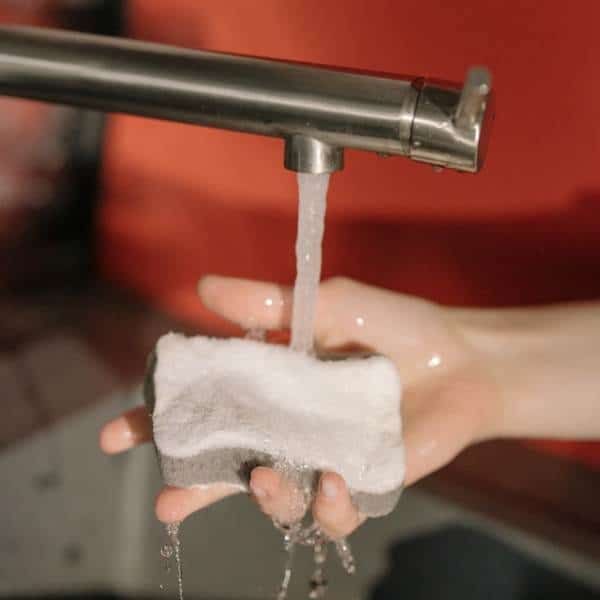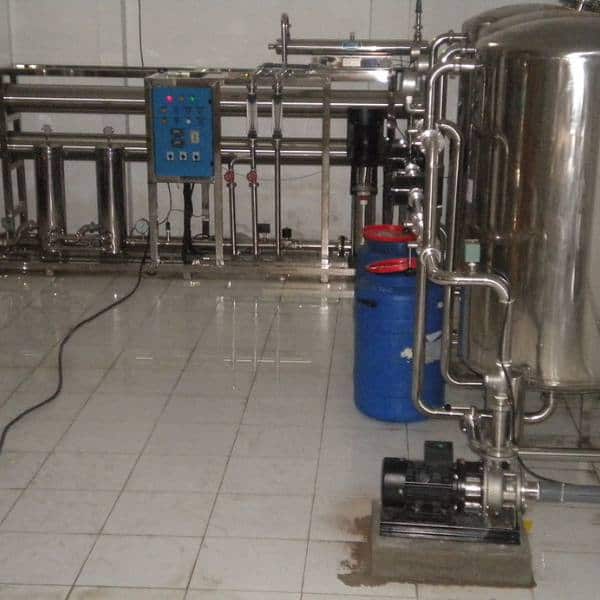What is Reverse Osmosis and How Does It Work?
Reverse osmosis is a process used to purify tap water and remove salts and other contaminants. It works by forcing water through a semi-permeable membrane allowing pure water to pass through while rejecting the impurities.
Reverse osmosis water purification process is considered one of the most effective ways to purify water. It can effectively remove up to 99% of all contaminants, making RO water safe for consumption.
In an RO system, the process starts by using water pressure to push the source water through a thin semi-permeable membrane. The micropores in the membrane are too small and can prevent particles larger than 0.0001 microns from passing through.
As a result, all impurities are trapped in what is called the brine on one side of the membrane while the other side contains filtered water. The brine is then flushed down the drain while the pure water is stored in an RO tank ready for use.

What is RO Wastewater?
RO wastewater is the brine or reject water of the RO system that contains all the contaminants from the source water. The additional water is not actually wasted but is used to flush the contaminants down the drain. As a result, most of the contaminants do not accumulate in the RO membrane like most filters.
Standard reverse osmosis systems have a water ratio of 4:1. This means the RO system uses 4 gallons to produce 1 gallon of RO water. However, technology has made it possible for some RO systems to be more efficient and function with a wastewater ratio of 1:1.
What Makes Reverse Osmosis Sustainable?
The sustainability of RO systems lies in their ability to produce purified water with minimal energy consumption. Compared to a home distiller that uses a heating element, RO systems only rely on water pressure to function. However, in areas where water pressure is low, homeowners would need an electrically operated booster pump for the RO system to function.
RO systems also offer an on-demand water supply eliminating the need for bottled water which generates plastic waste.
RO Wastewater is recyclable
The idea of recycling RO wastewater not only conserves water but also contributes to reducing costs related to the discharge and disposal of wastewater.
However, RO wastewater is not safe to be used in bathing as it may contain high levels of contaminants from the water source.
Following are some of the many safe ways you can repurpose RO wastewater:
Household cleaning
Household cleaning is one of the ways that RO wastewater can be reused in an environmentally friendly way. Depending on the water source, RO wastewater can be used to clean windows, floors, and patios.
You can also use it to pre-rinse your clothes when doing laundry or wash dishes and other kitchen utensils.

Flushing toilets
Much water is wasted when flushing toilets. In fact, it accounts for a third of household water usage. To counter this, you can use RO wastewater instead.
Washing cars
Another way to reuse RO wastewater is by using it to wash your car. Using a bucket and RO wastewater not only saves water but money on your water bill as well.
RO requires less energy than distillation
Distillation and reverse osmosis offer an efficient way to purify water. But between the two, reverse osmosis uses lesser energy. In fact, reverse osmosis filters only rely on your city’s water pressure. However, one might consider an electrically operated booster pump if the water pressure drops below the required 40 psi.
On the other hand, distillation could not function without the use of a heating element. Typically, home water distillers use about 3 KWH to produce one gallon of distilled water. Of course, this could add depending on the size of your household.
RO treats domestic and industrial wastewater
Reverse osmosis (RO) is one of the most efficient and comprehensive forms of wastewater treatment from both domestic and industrial sources. Reverse osmosis system works by using a high-pressure membrane to remove up to 99% of organic compounds, heavy metals, bacteria, viruses, salts, and other contaminants from the waste stream.
This process helps reduce pollution levels in rivers, lakes, and groundwater while also helping industries meet environmental regulations regarding wastewater discharge.
Additionally, RO treatment helps preserve aquatic habitats by preventing hazardous substances from entering bodies of water that sustain marine life.

RO is more environmental-friendly than producing bottled water
The water bottling process requires fossil fuel which contributes to global warming and pollution. In fact, it takes 17 million barrels of oil to produce enough plastic water bottles for consumers in the USA.
What’s worse, these plastic bottles are not recycled, piling up in landfills and many of them end up in the oceans killing marine life.
On the other hand, a single reverse osmosis filter system can replace up to 1,500 standard 16 oz bottles in one year – that’s a lot of plastic! Plus, they’re cheaper than buying bottled water over time because you don’t have to restock with cases of plastic bottles every few weeks or months.
What Are the Unsustainable Aspects of Reverse Osmosis
When it comes to water filtration, reverse osmosis is a popular choice for many due to its effectiveness and affordability. However, this process does come with several unsustainable aspects that need to be considered.
RO membranes are not recyclable
RO membranes are made of thin layers of plastic material and are not recyclable. So, after the end of its filter, the RO membrane needs to be replaced. And since RO membranes are made of plastic, they become plastic waste that does not disintegrate quickly.
However, you can still extend the life of your membrane by using a high-quality water softener.
RO brine requires proper disposal
RO brine is a by-product created when water is treated using reverse osmosis (RO) technology. It’s a highly concentrated stream of dissolved salts and minerals that must be disposed of properly. If not managed correctly, RO brine can contaminate local waterways and disrupt natural ecosystems.
To avoid environmental harm, it’s essential that RO brine be carefully monitored and properly disposed of at a secure disposal facility. Careful consideration should be given to the method used for disposal to ensure the highest levels of safety are maintained.
Common methods for disposing of RO brine include evaporation and injection in underground wells, but these must comply with strict regulations set out by government organizations to limit environmental contamination.
Conclusion
Reverse osmosis is a sustainable method of purifying water. It is effective, efficient, and cost-effective compared to other methods. Although filter replacements can be costly, the environmental benefits generally outweigh the costs. Reverse osmosis is an

